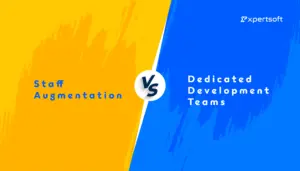European SMEs have experienced a fundamental shift in AI adoption over the past year, with clearer regulations accelerating implementation while new challenges around responsible AI use and workforce transformation emerge. Usage of AI technologies increased significantly, with text mining adoption rising by 4.0 percentage points year-on-year to 6.9% of enterprises according to Eurostat’s 2025 EU survey on ICT usage and e-commerce, signaling growing confidence in AI applications.
Introduction
The European SME landscape underwent a dramatic transformation in AI adoption between 2024 and 2025. What began as tentative experimentation has evolved into strategic implementation, driven by regulatory clarity, improved accessibility, and mounting competitive pressures. European organizations lag behind their US counterparts by 45 to 70 percent in AI adoption, yet this represents where most of generative AI’s economic potential lies.
This analysis examines the pivotal shifts reshaping how European SMEs approach artificial intelligence, highlighting breakthrough progress alongside persistent barriers and emerging opportunities that will define the next phase of digital transformation.
Regulatory Framework Maturation
The Game-Changing Reality of 2025
The AI Act entered into force on 1 August 2024, with prohibitions and AI literacy obligations becoming applicable from 2 February 2025. This represents far more than regulatory housekeeping—it’s fundamentally changed how SMEs evaluate and implement AI solutions.
Then (2024): Regulatory uncertainty created a compliance paralysis among SMEs, with many adopting a wait-and-see approach while legal frameworks remained undefined.
Now (2025): According to the European Commission’s official documentation, specific measures include granting priority access for SMEs and EU-based startups to regulatory sandboxes if eligibility criteria are met, with tailored awareness raising and digital skills development activities organized to address the needs of smaller organizations. The implementation includes dedicated communication channels and reduced conformity assessment fees for SMEs.
Critical Impact: According to EU AI Act provisions, sandboxes will be free of charge for SMEs, including start-ups, other than exceptional costs that a national competent authority may fairly and proportionately recover, removing a significant barrier to AI experimentation and testing.
Accessibility Revolution and Financial Democratization
Beyond Cost Reduction: Structural Change
The narrative of AI becoming “more affordable” understates the magnitude of change occurring in 2025. We’re witnessing a fundamental restructuring of how AI capabilities reach smaller enterprises.
Then (2024): High implementation costs and limited funding created a clear digital divide between large enterprises and SMEs in AI adoption capabilities.
Now (2025): According to the European Commission’s documentation, the Commission launched the AI innovation package in January 2024 to support Artificial Intelligence startups and SMEs, including GenAI4EU to stimulate the uptake of generative AI across the Union’s key strategic industrial ecosystems. This represents a coordinated European approach to AI democratization.
Emerging Reality: A comprehensive study analyzing 12,108 SMEs from the European Union published in ScienceDirect (2024) highlights the importance of digital and innovation capabilities in driving AI adoption, where complementing innovation capabilities exhibit synergistic effects, suggesting that success depends more on strategic capability building than pure financial resources.
Skills Evolution: From Hiring to Building
The Internal Capability Revolution
The most significant shift in 2025 has been SMEs’ transition from external talent acquisition to internal capability development—a change driven by both necessity and strategic insight.
Then (2024): SMEs struggled with talent scarcity, leading to expensive external consultancy dependencies and implementation delays.
Now (2025): According to a 2025 study published in Applied Sciences on “Artificial Intelligence Adoption in SMEs,” SMEs can introduce ‘AI pilots’ within departments to pilot tools and coach others, with platforms such as ChatGPT for Business, Microsoft Copilot, or Google Workspace AI integrating directly with standard office software. This represents a fundamental shift toward internal capability building.
Strategic Insight: According to the same Applied Sciences study, free and paid learning modules on platforms such as LinkedIn Learning, Coursera, or Google’s AI Academy help build internal capability, while SMEs should embed Gen-AI into their OKRs, innovation roadmaps, and performance KPIs.
Use Case Sophistication and Strategic Integration
From Efficiency to Innovation
European SMEs in 2025 demonstrate a maturation in AI application that goes far beyond the automation-focused implementations of 2024.
Then (2024): AI implementations focused primarily on operational efficiency and cost reduction through basic automation and data processing.
Now (2025): According to Eurostat’s January 2025 report, the most used AI technology was performing analysis of written language (text mining) adopted by 6.9% of enterprises, followed by generating written or spoken language (natural language generation) used by 5.4% of enterprises. This indicates a shift toward more sophisticated, content-creation and analysis applications.
Revenue Impact: Research published in Emerald Insight on “Artificial intelligence adoption and revenue growth in European SMEs” found that coefficient estimates of AI and IoT and AI and BDA were positive, significant, and higher than other exclusive adoption states, confirming complementarity effects between AI technologies and revenue growth.
Ecosystem Collaboration and Partnership Networks
The Rise of AI Innovation Ecosystems
2025 marked the emergence of sophisticated collaboration networks that fundamentally changed how SMEs access and implement AI capabilities.
Then (2024): Fragmented vendor relationships and isolated implementation attempts often led to integration challenges and suboptimal results.
Now (2025): According to the Applied Sciences study on AI adoption in SMEs, SMEs should build strategic external partnerships by collaborating with universities, research centers, AI consulting firms, and technology providers to gain access to expert guidance and co-develop solutions tailored to their business context.
Network Effects: The study recommends that participation in innovation ecosystems and industry alliances allows SMEs to exchange knowledge, gain exposure to best practices, and remain informed about AI trends and tools suitable for SME environments.
Data Strategy and Digital Infrastructure Maturation
The Foundation Layer Revolution
One of the most underreported yet critical developments in 2025 has been the maturation of data strategies among European SMEs, creating the foundation for more sophisticated AI implementations.
Challenge Recognition: The ScienceDirect study on European SME AI adoption found that business environmental support alone demonstrates limited impact, emphasizing its contingent effectiveness within a well-elaborated institutional framework, while internal capabilities exert a greater influence on AI adoption in SMEs.
Strategic Response: SMEs are increasingly recognizing that AI success depends more on internal digital and innovation capabilities than external support mechanisms, leading to more focused investment in foundational data and digital infrastructure.
Risk Management and Responsible AI Implementation
Beyond Compliance: Competitive Advantage
The emergence of responsible AI as a competitive differentiator represents one of 2025’s most significant strategic shifts for European SMEs.
Regulatory Driver: According to EU AI Act documentation, the Act introduces specific disclosure obligations to ensure that humans are informed when necessary, such as when using AI systems like chatbots, and providers of generative AI have to ensure that AI-generated content is identifiable.
Market Opportunity: Legal analysis indicates that the Act emphasizes ethical AI development by focusing on transparency, safety, and non-discrimination, with businesses needing to implement robust risk management and governance structures, creating opportunities for SMEs to differentiate through trustworthy AI implementation.
Current Challenges and Persistent Barriers
Despite significant progress, European SMEs in 2025 continue to face substantial implementation challenges that require strategic attention:
Capability Gaps: The Applied Sciences study identifies ten critical challenges across the TOE dimensions, ranging from data access and skill shortages to cultural resistance, infrastructure limitations, and weak governance practices.
Scale Limitations: According to McKinsey’s analysis, European companies lead in AI semiconductor equipment but have less presence in AI-suitable semiconductor design, while on adoption, European organizations lag behind their US counterparts by 45 to 70 percent.
Resource Constraints: McKinsey’s March 2025 “State of AI” report found that only 1 percent of company executives describe their gen AI rollouts as “mature,” indicating that most organizations have yet to see organization-wide, bottom-line impact from gen AI use.
Strategic Recommendations for 2025 and Beyond
Based on current trends and successful implementation patterns, European SMEs should consider the following strategic approaches:
1. Regulatory Readiness as Competitive Advantage Leverage the EU AI Act’s SME-friendly provisions, particularly regulatory sandboxes and reduced compliance costs, to test and refine AI implementations before full market deployment.
2. Internal Capability Building Priority Focus investment on building internal digital and innovation capabilities rather than relying primarily on external AI solutions or consultancy services.
3. Ecosystem Partnership Strategy Develop strategic partnerships with universities, research institutions, and technology providers to access expertise and co-develop tailored AI solutions.
4. Responsible AI as Market Differentiator Position compliance with AI Act requirements as a competitive advantage, particularly in sectors where trust and transparency create market value.
Looking Forward: The 2026 Landscape
As we approach the full implementation of the AI Act in August 2026, European SMEs face both unprecedented opportunities and intensifying competitive pressures. According to McKinsey’s research, with the technology still in its early stages and much of its productivity gains yet to be unlocked, the window of opportunity for Europe remains wide open.
The organizations that will thrive are those that view 2025 as a foundation-building year—developing internal capabilities, establishing ecosystem partnerships, and creating responsible AI governance structures that will support long-term competitive advantage.
The Bottom Line: Success in AI adoption for European SMEs in 2025 depends less on technology selection and more on strategic capability building, regulatory readiness, and ecosystem participation. The winners will be those who use this period of regulatory clarity and technological maturation to build sustainable competitive advantages rather than pursuing quick implementation wins.
Stay ahead of the AI transformation curve. For tailored guidance on navigating AI implementation while ensuring compliance with the EU AI Act, explore how strategic planning can position your SME for long-term success in Europe’s evolving digital landscape.
Sources
- Eurostat (2025): “Usage of AI technologies increasing in EU enterprises” – EU survey on ICT usage and e-commerce in enterprises
- McKinsey & Company (2024): “Time to place our bets: Europe’s AI opportunity” – October 2024 analysis of European AI competitiveness
- McKinsey & Company (2025): “The state of AI: How organizations are rewiring to capture value” – March 2025 Global Survey on AI
- ScienceDirect (2024): “Analyzing AI adoption in European SMEs: A study of digital capabilities, innovation, and external environment” – Empirical study of 12,108 SMEs from European Union
- Emerald Insight (2024): “Artificial intelligence adoption and revenue growth in European SMEs: synergies with IoT and big data analytics”
- Applied Sciences (2025): “Artificial Intelligence Adoption in SMEs: Survey Based on TOE–DOI Framework, Primary Methodology and Challenges” – Published June 2025
- European Commission: Official EU AI Act documentation and implementation guidelines
- EU AI Act official resources: Implementation timelines, compliance requirements, and SME-specific provisions



